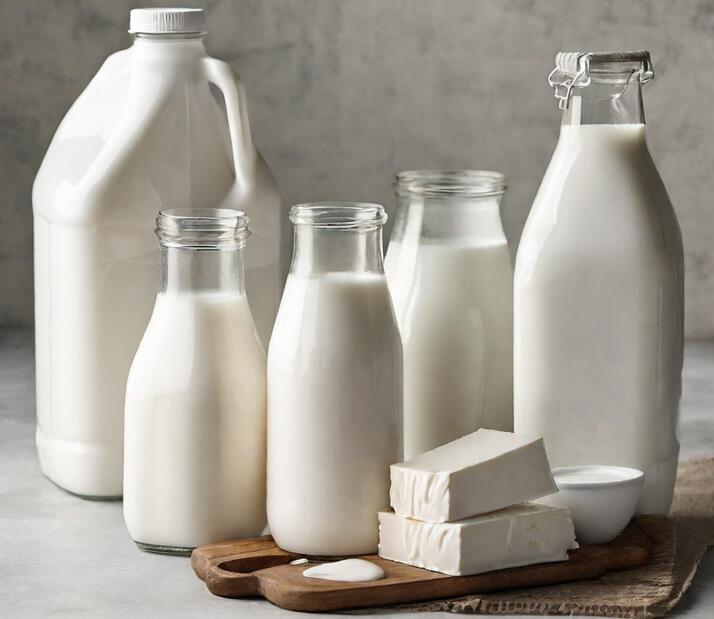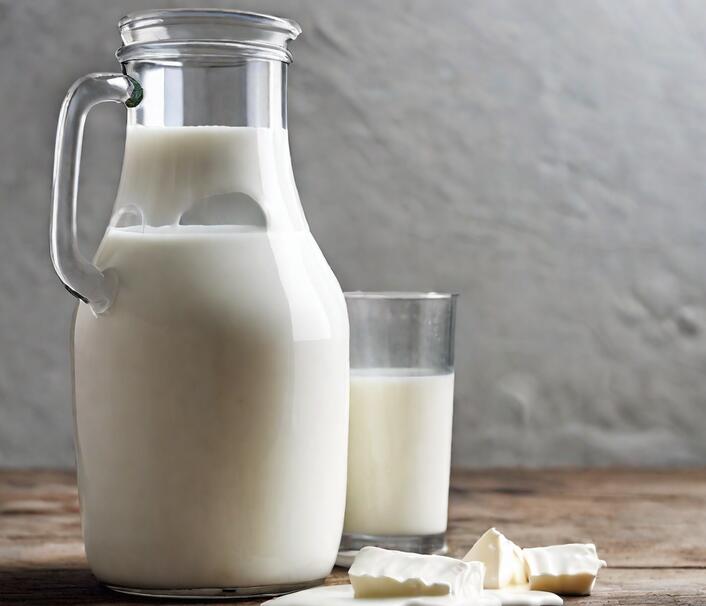Whole milk is a staple in many households and is often consumed for its rich and creamy taste. However, if you’re watching your calorie intake, you may be wondering how many calories are in whole milk. This article will delve into the exact calorie count of whole milk, explore its nutritional benefits, and provide practical tips for a balanced diet.
What are Whole Milk and Nutrition Facts?
Whole milk is the unprocessed form of milk that contains all of its natural components, including fat, protein, carbohydrates, vitamins, and minerals. It is typically sourced from cows and is known for its higher fat content compared to other milk varieties.
Here are the approximate nutrition facts for 1 cup (8 ounces or 240 ml) of whole milk:
- Calories: 150-160
- Total Fat: 8 grams
- Saturated Fat: 4.5 grams
- Trans Fat: 0 grams
- Cholesterol: 25 milligrams
- Sodium: 125 milligrams
- Total Carbohydrates: 12 grams
- Dietary Fiber: 0 grams
- Sugars: 12 grams
- Protein: 8 grams
- Calcium: 276 milligrams
- Vitamin D: 2.5 micrograms

How Many Calories in Whole Milk?
Whole milk has a caloric content of approximately 150-160 calories per 8-ounce (240 ml) serving.
The calorie content of whole milk primarily comes from its fat content. Whole milk typically contains about 8 grams of fat per 8-ounce serving, which accounts for around 72 calories. The remaining calories come from the protein and carbohydrate content of the milk.
Here is a table showcasing the approximate calorie content of different serving sizes of whole milk:
| Serving Size | Calories |
|---|---|
| 1 cup (240 ml) | 150-160 |
| 1 glass (200 ml) | 120-130 |
| 1 pint (473 ml) | 300-320 |
| 1 quart (946 ml) | 600-640 |
Note that the calorie content of whole milk can be influenced by various factors, including the processing methods and brand variations. In addition, different brands may have slight variations in fat content, which can affect the overall calorie content.
It’s important to check the nutrition labels of different brands to determine the specific calorie count per serving.
Whole Milk vs. Other Milk Alternatives
When it comes to cow’s milk, there are several varieties to choose from, each with its unique characteristics. Here’s a comparison of the approximate calorie content in 1 cup (240 ml) of different milk varieties:
| Milk Variety | Calories |
|---|---|
| Whole Milk | 150-160 |
| Skimmed Milk | 80-90 |
| 2% Milk | 120-130 |
| Semi-Skimmed | 110-120 |
| Almond Milk | 30-40 |
| Soy Milk | 80-110 |
| Oat Milk | 120-140 |
1. Whole (full-fat) Milk
Whole milk is the most unprocessed form of cow’s milk. It contains all of its natural components, including fat, protein, carbohydrates, vitamins, and minerals. It typically has a creamy texture and a rich, full flavor.
Whole milk has a milk fat percentage of approximately 3.5%. In a 1-cup (8 oz) serving of whole milk, you can expect to find around 150-160 calories, 8 grams of fat (including saturated fat), approximately 8 grams of protein, and 12 grams of carbohydrates.
2. Skim (non-fat or fat-free) Milk
Skim milk undergoes a process where the milk fat is removed. This results in a significantly lower fat content. Skim milk contains 0% milk fat, making it the leanest option among cow’s milk varieties.
Despite the absence of fat, skim milk still retains a similar protein and carbohydrate content to whole milk. In a 1-cup (8 oz) serving of skim milk, you’ll find around 80-90 calories, and less than 0.5 grams of fat (including saturated fat). This is approximately 8 grams of protein and 12 grams of carbohydrates.
3. 1% Milk
1% milk is a low-fat milk variety that contains 1% milk fat. It strikes a balance between the richness of whole milk and the leanness of skim milk.
In a 1-cup (8 oz) serving of 1% milk, you can expect to find approximately 100-110 calories, and around 2-3 grams of fat (including saturated fat). In addition, It also has approximately 8 grams of protein and 12 grams of carbohydrates.
4. 2% Milk
2% milk falls between whole milk and 1% milk in terms of fat content. It contains 2% milk fat, providing a slightly creamier texture and flavor compared to skim or 1% milk.
In a 1-cup (8 oz) serving of 2% milk, you’ll find approximately 120-130 calories, around 4-5 grams of fat (including saturated fat), approximately 8 grams of protein, and 12 grams of carbohydrates.
5. Soy Milk
Soy milk is made from soybeans and is one of the most widely consumed plant-based milks. It has a creamy texture and a slightly nutty flavor. Soy milk is a good source of protein and is often fortified with calcium and other essential nutrients.
In a 1-cup (8 oz) serving of unsweetened soy milk, you can expect to find around 80-110 calories, approximately 4-5 grams of fat, around 7-9 grams of protein, and 4-5 grams of carbohydrates.
6. Oat Milk
Oat milk is made from oats and has a naturally sweet flavor and a smooth texture. It has gained popularity in recent years due to its sustainability and creamy consistency.
Oat milk is often fortified with essential nutrients like calcium and vitamin D. In a 1-cup (8 oz) serving of unsweetened oat milk, you’ll find approximately 120-140 calories, around 4-5 grams of fat, approximately 2-4 grams of protein, and 16-20 grams of carbohydrates.
7. Almond Milk
Almond milk is made from almonds and has a mild, nutty flavor. It is naturally low in calories and fat, making it a popular choice for those watching their calorie intake.
Almond milk is often fortified with calcium, vitamin D, and other nutrients. In a 1-cup (8 oz) serving of unsweetened almond milk, you can expect to find around 30-40 calories. This is approximately 2-3 grams of fat, less than 1 gram of protein, and 1-2 grams of carbohydrates.

Health Benefits of Whole Milk
Whole milk offers several health benefits due to its rich nutritional composition. Here are some of the key health benefits of consuming whole milk:
1. Bone Health
Whole milk is an excellent source of calcium, which is essential for maintaining strong and healthy bones. Calcium is crucial for bone development and growth.
This makes whole milk particularly beneficial for children, adolescents, and individuals at risk of osteoporosis. The vitamin D present in whole milk also aids in calcium absorption, further supporting bone health.
2. Vitamin Content
Whole milk is a good source of various vitamins that play vital roles in overall health. It contains significant amounts of vitamin A, which supports healthy vision, immune function, and cell growth.
Additionally, whole milk provides vitamin B12, which is involved in red blood cell production, neurological function, and DNA synthesis. These vitamins contribute to overall well-being and help prevent deficiencies.
3. Protein and Muscle Development
Whole milk is a rich source of high-quality protein, which is essential for muscle development, repair, and maintenance. Protein is made up of amino acids, which are the building blocks of muscle tissue.
Consuming adequate protein, such as that found in whole milk, supports muscle growth and recovery, making it beneficial for athletes and individuals involved in physical activities.
4. Satiety and Weight Management
The combination of protein, fat, and carbohydrates in whole milk provides a feeling of satiety and can help control appetite. Including whole milk in your diet may help you feel fuller for longer.
This can help reduce the likelihood of overeating or snacking between meals. This can be particularly beneficial for weight management and maintaining a healthy body weight.
5. Nutrient Absorption
The fat content in whole milk aids in the absorption of fat-soluble vitamins, such as vitamins A, D, E, and K. These vitamins require dietary fat for proper absorption and utilization by the body.
Consuming whole milk alongside foods rich in fat-soluble vitamins can enhance their absorption and maximize their health benefits.
Practical Tips for Consuming Whole Milk
If you enjoy consuming whole milk but want to be mindful of your calorie intake, here are some practical tips to consider:
1. Practice Portion Control
Measure out the desired amount of whole milk to ensure you’re consuming an appropriate serving size. The standard serving size for milk is typically 1 cup (240 ml). Using a measuring cup can help you accurately portion out the desired amount.
2. Choose Lower-Fat Versions
If you’re concerned about calorie content, you can opt for reduced-fat or low-fat versions of whole milk. These options have a lower fat content and, consequently, fewer calories. For example, 2% milk or 1% milk can be alternatives to whole milk while still providing some creaminess and flavor.
3. Incorporate Whole Milk into Recipes
Whole milk can add richness and flavor to various recipes. Consider using it in cooking and baking to enhance the taste and texture of dishes like creamy sauces, soups, custards, or baked goods. Keep in mind that the calorie content of the final dish will depend on the overall recipe and portion sizes.
4. Balance Your Overall Diet
When incorporating whole milk into your diet, it’s important to consider the calorie content of other foods throughout the day. Aim for a balanced diet that includes a variety of nutrient-dense foods.
These foods include fruits, vegetables, whole grains, lean proteins, and healthy fats. This balance helps ensure you’re meeting your nutritional needs while maintaining a healthy calorie balance.
5. Consider Your Total Calorie Intake
Whole milk can fit into a calorie-controlled diet when consumed in moderation. If you’re watching your calorie intake, be mindful of the overall amount of calories you consume. Tracking your daily calorie intake and keeping a food diary can help you stay accountable and make informed choices.
Who Should Drink Which Type of Milk?
The choice of milk type depends on individual dietary needs, health considerations, taste preferences, and specific dietary restrictions. Here are some guidelines to help determine which type of milk may be suitable for different individuals:
1. Whole Milk
Whole milk is a good option for individuals who have no dietary restrictions, need to consume more calories, and can tolerate higher fat content. It can be beneficial for growing children, athletes, and those who require additional energy, such as individuals with high metabolic rates or those recovering from illnesses.
2. Skim or Low-Fat Milk
Skim or low-fat milk is suitable for individuals who are watching their calorie or fat intake, aiming for weight loss or have specific dietary restrictions, such as a low-fat diet or cardiovascular concerns. It can also be an option for individuals who prefer a lighter taste.
3. Soy Milk
Soy milk is a suitable choice for individuals who follow a vegan or plant-based diet, have lactose intolerance, or are allergic to dairy proteins. It is also a good option for individuals who want to increase their protein intake, as soy milk is a complete protein source.
4. Oat Milk
Oat milk is a great choice for individuals who have lactose intolerance or dairy allergies, follow a vegan or plant-based diet, or prefer a creamy and slightly sweet taste. It is often fortified with nutrients like calcium and vitamin D, making it a suitable alternative to cow’s milk.
5. Almond Milk
Almond milk is suitable for individuals who are lactose intolerant, have dairy allergies, follow a vegan or plant-based diet, or prefer a nutty flavor. However, it is lower in protein compared to cow’s milk and other plant-based alternatives, so individuals should ensure they are getting enough protein from other sources in their diet.
FAQs
1. Is whole milk suitable for individuals with lactose intolerance?
Individuals with lactose intolerance may experience discomfort when consuming whole milk. There are lactose-free versions of whole milk available that provide the same nutritional benefits without the lactose. These alternatives can be a suitable option for individuals with lactose intolerance.
2. Can I substitute whole milk with lower-calorie alternatives in recipes?
Yes, you can substitute whole milk with lower-calorie alternatives like skimmed or plant-based milk in recipes. However, keep in mind that the texture and flavor of the dish may be slightly different. Experiment with different milk alternatives to find the one that best suits your needs and preferences.
3. Does the amount of milk fat contribute to any diseases?
The amount of milk fat in whole milk does not necessarily contribute to diseases on its own. However, diets high in saturated fat have been associated with an increased risk of certain health conditions, such as heart disease and obesity, when consumed in excess.
For individuals with specific health concerns or conditions, it is advisable to consult with a healthcare professional or registered dietitian to determine the most appropriate milk options for their needs.
Conclusion
Understanding the calorie content of whole milk is essential for making informed dietary choices. By incorporating whole milk into a balanced diet, you can enjoy its creamy goodness while maintaining a healthy lifestyle. Remember to consult with a healthcare professional for personalized advice based on your specific dietary needs.






